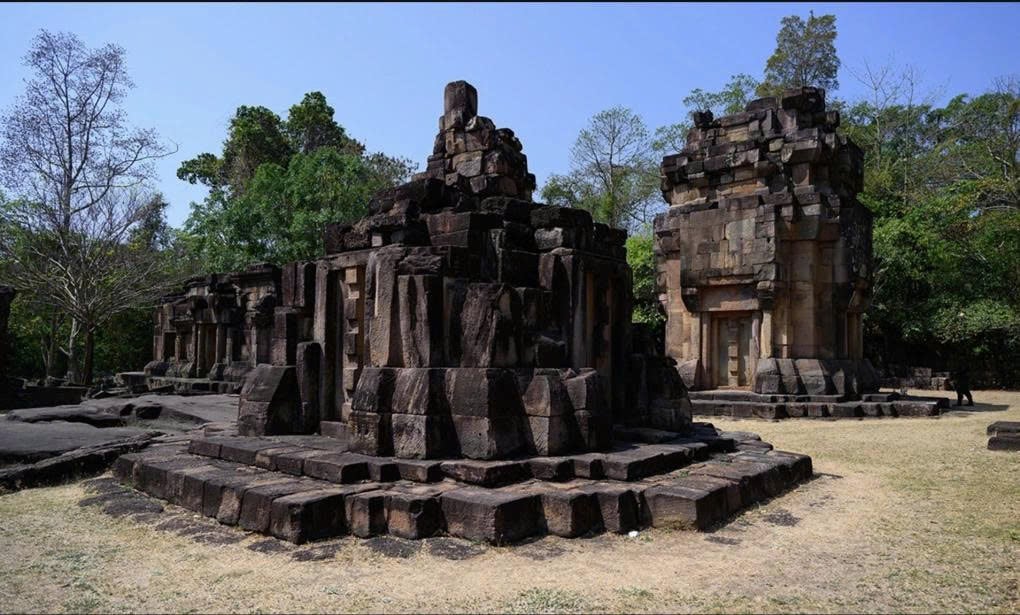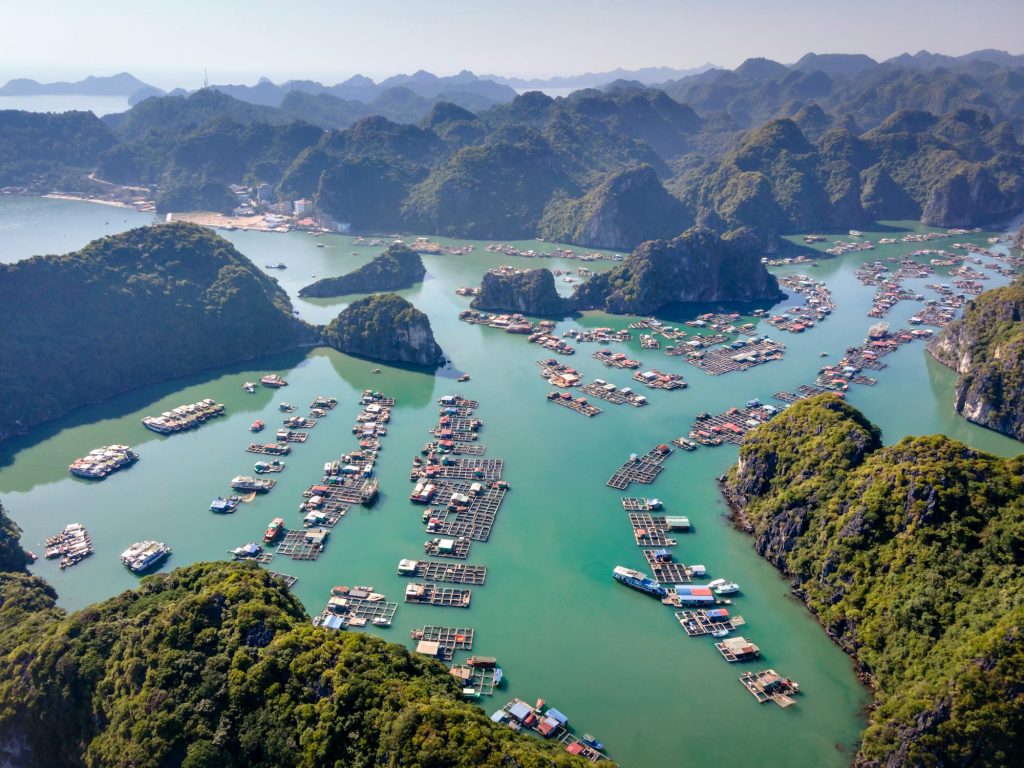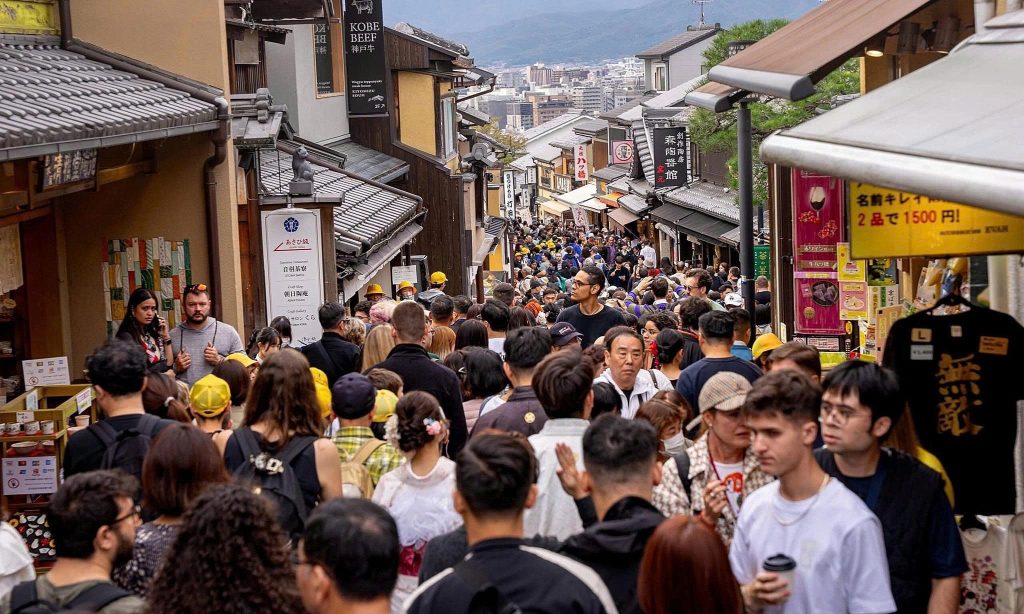The ancient temple complexes of Ta Muen and Preah Vihear, contested between Cambodia and Thailand, are nestled within the Dangrek Mountains. These invaluable heritage sites boast a history spanning thousands of years.
Ta Muen Temple Complex
The Ta Muen temple complex comprises three temples: Ta Muen Thom, Ta Muen Toch, and Ta Kwai. Of these, Ta Muen Thom is the largest in scale. On July 24th, clashes erupted here after Cambodian military spokesperson Maly Socheata accused Thai soldiers of violating an agreement by entering the temple area and erecting barbed wire, blocking tourist access.
Ta Muen Thom Temple
Prasat Ta Muen Thom, also known as Ta Muen Thom in Thai, was built during the reign of King Udayadityavarman II (1050-1066) and was dedicated to the Hindu deity Shiva. Deep within the forests of Surin Province (Thailand), this structure is part of an ancient temple route connecting Angkor (Cambodia) with Phimai (Thailand). Cambodia currently claims sovereignty based on its historical Khmer Empire borders, while Thailand asserts the temple lies within its territory.
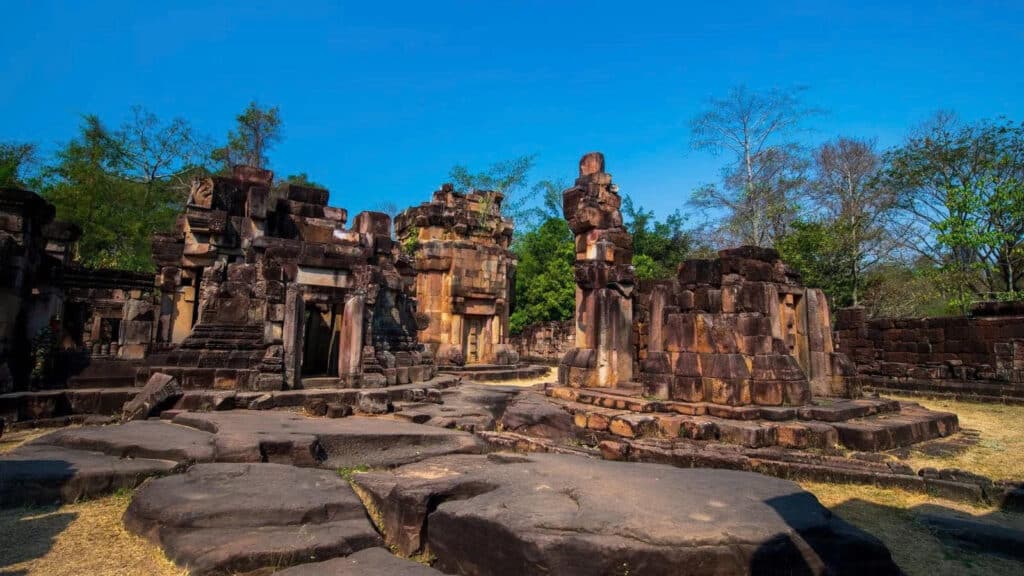
The temple, constructed from laterite and sandstone, is rectangular in layout and faces south – a rare orientation in Khmer architecture, which typically favors the east. Within its grounds are a statue of the bull god Nandi and a natural rock formation symbolizing the linga, representing Shiva’s creative life force. Sacred water was once channeled from the linga for rituals. The system of auxiliary buildings and rest stops for pilgrims indicates the structure’s past role as a central religious and spiritual hub in the region.
Ta Muen Toch Temple
Located approximately 300 meters from Ta Muen Thom, Ta Muen Toch serves as the second stop in this cluster of three ancient Khmer temples situated near the Thai-Cambodian border. Compared to the main Ta Muen Thom, Ta Muen Toch is smaller in scale, built from sandstone with simpler architecture. This temple also faces south – a common feature in ancient Khmer religious structures, aiming to spiritually connect with the sacred land of Angkor.
Ta Muen Toch exudes the beauty of time, with moss-covered stone walls and a serene atmosphere that makes visitors feel as if they’ve stepped into a forgotten world. Travelers often pause here to admire the intricate carvings on the stone before continuing their journey to explore the nearby Ta Muen Thom.
Ta Kwai Temple
Approximately 10 kilometers southeast of the Ta Muen Toch complex, Ta Kwai Temple sits close to the Thai-Cambodian border. No longer as intact as the larger temples, it now consists of only a few stone walls and foundations, hidden amidst the forest.
However, it is this very wildness and isolation that attracts adventurous travelers and archaeology enthusiasts. This temple previously belonged to a network of sacred buildings found along the pilgrim path between Angkor and Thailand’s northeast. As it is located in a military zone, the journey to Ta Kwai is not easy, but this very challenge adds to its allure for those who seek unique experiences.
The Nation describes the Ta Muen complex as a “land forgotten by time,” hidden within pristine mountains and forests, where visitors can not only explore historical sites but also connect with the profound local culture. According to June 2025 data, approximately 7,000 visitors daily from both Thailand and Cambodia visit the Ta Muen Thom and nearby Ta Kwai temples.
Preah Vihear Temple
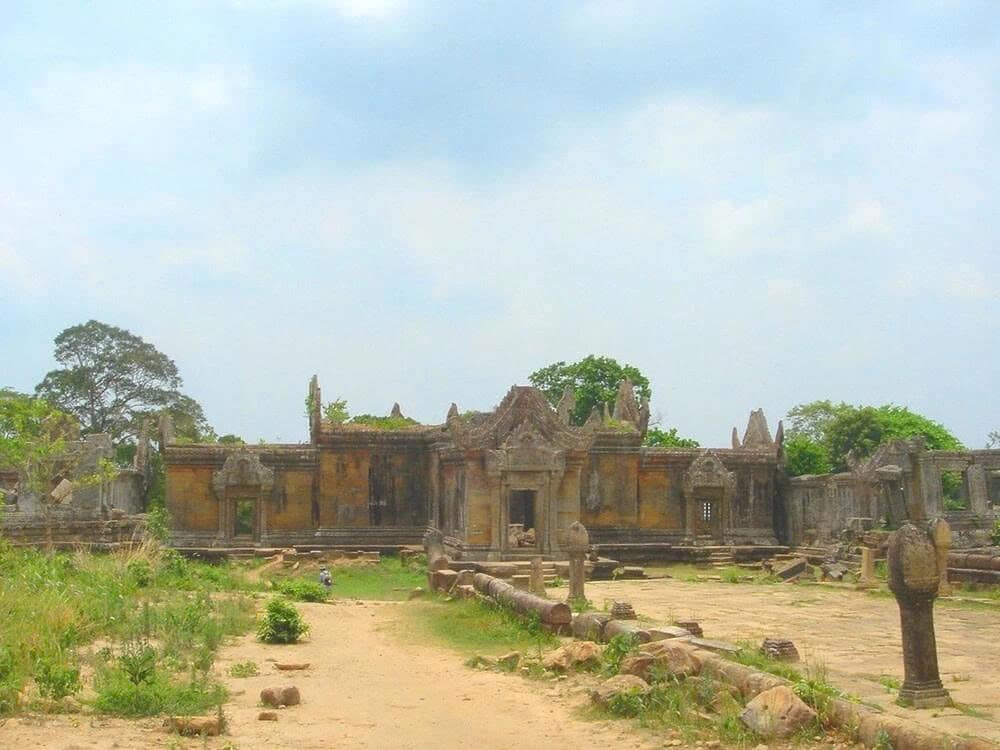
Located about 110 kilometers from Ta Muen Thom, Preah Vihear is an 11th-century Hindu temple perched atop the Dangrek Mountains at an elevation of 525 meters. Stretching 800 meters along a north-south axis, the upper section of the temple rises 120 meters higher than the lower parts. The temple’s summit culminates in a sheer cliff, offering panoramic views of the entire Cambodian plain. Although about 40% damaged by time, the remaining sandstone carvings still clearly demonstrate the exquisite craftsmanship of the ancient Khmer people.
Due to its exceptional historical and architectural value, Preah Vihear has been dubbed the “king of mountain temples” and was once listed by the travel website Lonely Planet as one of the “10 must-see destinations in Cambodia.” Each year, the temple welcomes hundreds of thousands of visitors.
While the International Court of Justice (ICJ) affirmed Cambodian sovereignty over the temple and the Dangrek mountain summit in 1962, the primary access route is conveniently located within Thailand’s Khao Phra Viharn National Park. Tourists often approach the temple from the Thai side due to the flat terrain, while the path from Cambodia is rugged and difficult.
After 1998, when Cambodia regained control of the area from the Khmer Rouge, both countries collaborated on tourism development. Under this arrangement, visitors from Thailand could enter the temple without a visa, only needing to purchase a ticket on the Cambodian side, while Thailand collected an entrance fee for the national park.
Relations between the two sides became strained in 2008 when UNESCO recognized Preah Vihear as a World Heritage site. The sovereignty dispute escalated into armed conflict, resulting in numerous casualties. By 2013, the ICJ further ruled that Cambodia had sovereignty over the entire temple area, but Thailand did not accept this and proposed bilateral negotiations. Preah Vihear, a temple over 1,000 years old, was once a flashpoint for some of the most intense clashes between the two nations. However, the current conflict has primarily centered around Ta Muen Thom.
The Ta Muen temple complex and Preah Vihear temple are not merely historical and cultural destinations; they have become symbols of national pride and tools for internal politics, ensuring that the dispute between Thailand and Cambodia shows no signs of abating.
According to Hindustan Times, The Nation

